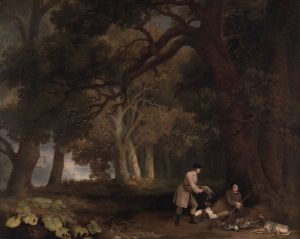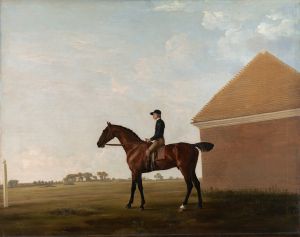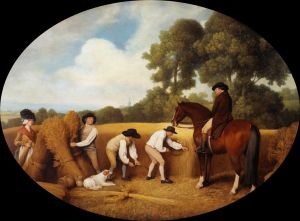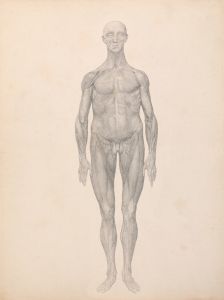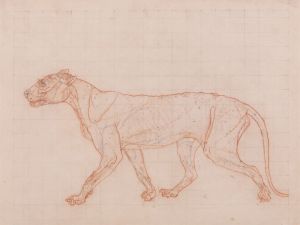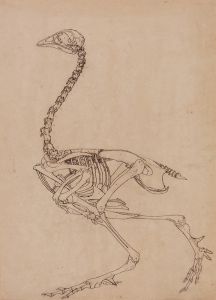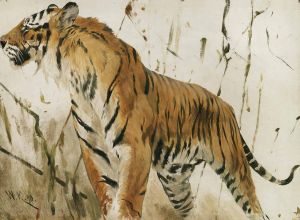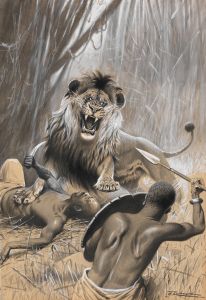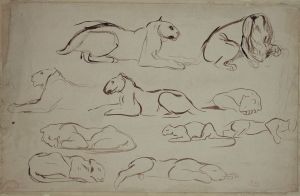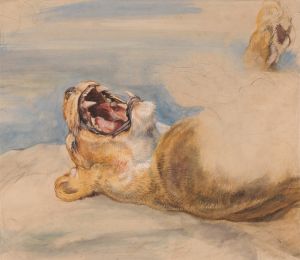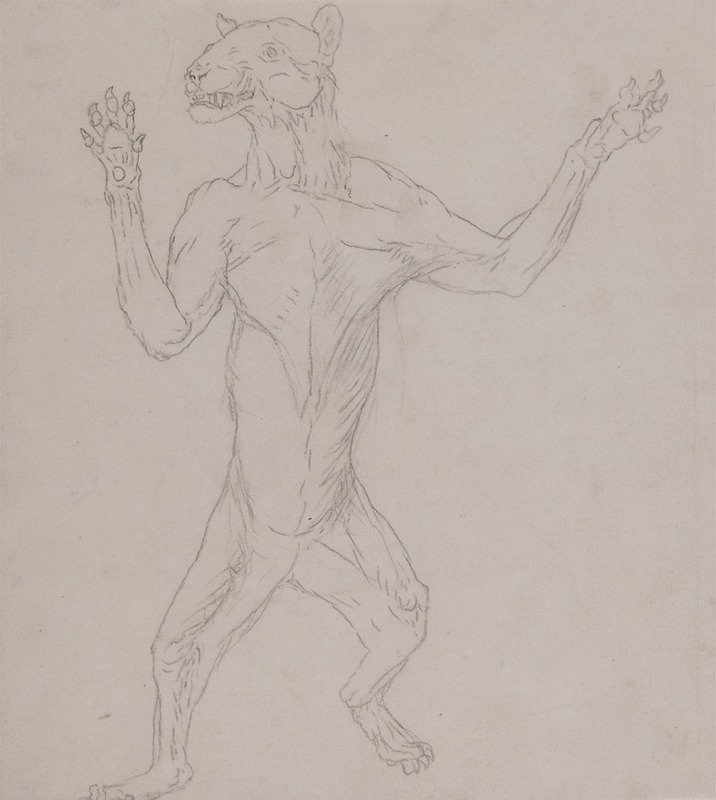
Tiger Body, Standing in Human Posture
A hand-painted replica of George Stubbs’s masterpiece Tiger Body, Standing in Human Posture, meticulously crafted by professional artists to capture the true essence of the original. Each piece is created with museum-quality canvas and rare mineral pigments, carefully painted by experienced artists with delicate brushstrokes and rich, layered colors to perfectly recreate the texture of the original artwork. Unlike machine-printed reproductions, this hand-painted version brings the painting to life, infused with the artist’s emotions and skill in every stroke. Whether for personal collection or home decoration, it instantly elevates the artistic atmosphere of any space.
"Tiger Body, Standing in Human Posture" is a painting by the renowned British artist George Stubbs, who is best known for his animal paintings, particularly those depicting horses. Stubbs was an influential figure in 18th-century British art, and his works are celebrated for their anatomical precision and attention to detail.
George Stubbs was born in 1724 in Liverpool, England, and he developed an early interest in anatomy, which significantly influenced his artistic career. His fascination with the anatomy of animals led him to undertake a detailed study of horse anatomy, which culminated in the publication of "The Anatomy of the Horse" in 1766. This work established Stubbs as a leading authority on animal anatomy and greatly influenced his approach to painting.
"Tiger Body, Standing in Human Posture" is one of Stubbs's lesser-known works and reflects his continued interest in the anatomy and depiction of animals. The painting is notable for its imaginative portrayal of a tiger standing upright in a human-like posture, which is an unusual and striking composition for the period. This work exemplifies Stubbs's skill in capturing the physicality and musculature of animals, even when depicted in unconventional poses.
The painting is believed to have been created during a time when exotic animals were becoming increasingly popular in Britain, partly due to the expansion of the British Empire and increased global exploration. Tigers, in particular, were subjects of fascination and were often featured in menageries and exhibitions. Stubbs's painting may have been inspired by this cultural interest in exotic animals and the desire to explore their forms in new and imaginative ways.
Stubbs's ability to render animals with anatomical accuracy while also imbuing them with a sense of character and presence is evident in "Tiger Body, Standing in Human Posture." The painting showcases his meticulous attention to detail, particularly in the depiction of the tiger's fur and musculature. Despite the fantastical nature of the composition, Stubbs's commitment to realism is apparent, as he captures the essence of the tiger's physicality.
The painting is part of a broader body of work by Stubbs that explores the boundaries between realism and imagination. His interest in depicting animals in unusual or anthropomorphic poses can be seen as a reflection of the Enlightenment-era curiosity about the natural world and the desire to understand and categorize it. Stubbs's work often blurs the line between scientific illustration and artistic expression, making his paintings both educational and aesthetically engaging.
While "Tiger Body, Standing in Human Posture" may not be as widely recognized as some of Stubbs's other works, it remains an intriguing example of his artistic exploration and his ability to combine scientific observation with creative interpretation. The painting continues to be of interest to art historians and enthusiasts who appreciate Stubbs's unique contribution to the depiction of animals in art.
Overall, George Stubbs's "Tiger Body, Standing in Human Posture" is a testament to his skill as an artist and his enduring fascination with the animal kingdom. Through this work, Stubbs invites viewers to reconsider the relationship between humans and animals and to appreciate the beauty and complexity of the natural world.






